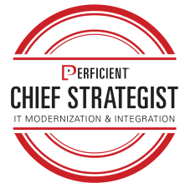According to RightScale’s eighth annual survey, “Cloud Computing Trends: 2019 State of the Cloud Survey”, “A significant number of public cloud users are now leveraging services beyond just the basic compute, storage, and network services.” The survey says relational database services is the most popular extended cloud service and “data warehouse moved up significantly to the third position.” It’s no surprise that as data volume, velocity, and types have exploded, companies are looking for a more agile and cost effective solutions for their data management and analytics strategies in the cloud.
The following topics outline the advantages of data storage and the enterprise data warehouse (EDW) in the cloud.
Cost Savings
The TCO of a cloud-based EDW is lower than that of on-premises when variables such as redundancy and disaster recovery are included. There are the added benefits of avoiding a large initial capital expense, the ability to try it before you buy it (reducing financial risk), and the ability to process large, one-off analytical workloads with elastic compute and storage and only pay for what is consumed.
Performance and scalability
With elastic compute and storage you never have to worry about a lack of hardware impacting performance. You do however need to pick the right data management tools for the job to ensure requirements are met. There is an expansive set of data services available on the cloud and performance is straight forward to test in the cloud paying for only the resources you use during tests.
Agility and time to value
You can quickly deploy new databases and services without the concern of expensive capital investments or hardware lead times. You can also rapidly try new and innovative tools and approaches in the cloud. For example, you could experiment with streaming data, AI and ML. You could set up sandboxes for user groups and self-service BI. And, in the cloud you have endless capacity for applications like storing sensor data for IoT.
Modern cloud architecture
Elastic compute, on-demand provisioning of infrastructure and global connectivity makes tasks like deploying new databases, federating data, replication and redundancy for disaster recovery easier than on premises. Also, innovation on the cloud is happening more rapidly than in on premises data centers allowing you to experiment with the latest technologies like serverless functions and AI.
Enable new capabilities and data growth
It is easier to experiment in the cloud and handle high volume and high velocity data. You can keep data longer and store more diverse data types and sources. Combining data availability and the modern data services available on the cloud is a great way to add new data capabilities.
Getting started
There were early concerns about cloud security. However, recent surveys show that many believe the cloud to be more secure than legacy systems. The cloud has strong perimeter security, controlled access, and cyber security experts monitoring and auditing security. Moving your data to the cloud is a good time to look again at cloud security policies and architecture.
Data and BI is a great way to get started on the cloud. EDW and BI is lower risk than moving your transactional systems. And there are many financial and technical benefits as outlined above.
Perficient has experience with EDW to cloud migrations. And partnerships with all the leading vendors in the space should you need any help. Our Cloud EDW, business intelligence, performance management, and predictive and risk analytics solutions incorporate industry expertise, years of experience, and insights from hundreds of successful implementations.

